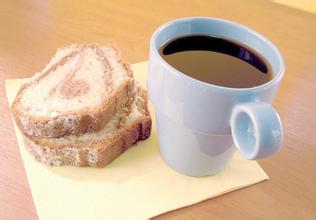Coffee bean washing method introduces which coffee bean varieties are treated by washing method
Water washing is the most popular treatment method at present, and most boutique coffee beans will choose water washing method. Washing coffee refining process: harvest → storage tank (removal of impurities and immature beans) → pulp removal machine (removal of pulp and impurities) → fermentation tank (removal of mucous membrane attached to endocarp) → washing pool (selection of light and hard beans) → sun drying field (or dryer) → sheller (removal of endocarp) → grading (electronic bean selector or hand selection, sieve, etc.) → outlet.
= washing and drying field
The appearance of coffee beans processed by washing is neat, and the impurities and defective beans are less, and the water content of coffee beans is generally about 16%. The advantage is that it has less miscellaneous flavor, clear taste and bright sour taste; the biggest disadvantage is that coffee beans are easy to get sour and astringent taste during fermentation, and a fermented bean will spoil 50 grams of beans.
G2 / water washing method
1.3 semi-washing method
Semi-washing, also known as "honey treatment", is a compromise between drying and washing, eliminating the need to ferment coffee fruits. Harvest → storage tank (remove impurities and immature beans) → pulp removal machine (remove pulp and impurities) → washing pool (select light and hard beans) → sun field (or dryer) → sheller (removal of endocarp) → classification (electronic bean selector or hand selection, sieve, etc.) → outlet.
Coffee fruit after taking off the pulp
The quality of honey treatment is more stable than that of drying treatment, but not as good as that of washing treatment. This method of processing coffee beans by honey treatment has recently been sought after by coffee lovers. It has a sweet taste and is rich in Crema. It is suitable for extracting Espresso from the base of Italian coffee. The advantage is that it can restore the flavor of coffee beans, the coffee is more sweet, and the taste of red wine is outstanding. The disadvantage is that coffee beans are very vulnerable to contamination and mildew during the drying process after the exocarp of coffee berries are removed.

Important Notice :
前街咖啡 FrontStreet Coffee has moved to new addredd:
FrontStreet Coffee Address: 315,Donghua East Road,GuangZhou
Tel:020 38364473
- Prev

There are several ways to treat coffee beans.
Honey treatment is a complex, time-consuming and difficult processing method. The first step is to select the best fruit, then peel off the flesh to leave the endocarp, which is the core of the honey treatment. The endocarp is rich in sugar and sourness, which slowly penetrate into the beans during drying. The second step is drying and producing high quality coffee.
- Next

Introduction to the treatment of raw coffee beans introduction of honey treatment introduction to the treatment process of coffee production
Honey treatment as an advanced coffee processing method, there is no lack of practitioners in Yunnan. But not everywhere is suitable for the production of honey beans, coffee producing areas are mostly wet and rainy, this process is very easy to make coffee beans fermented mildew, mildew taste. Because in some places, while using honey treatment, it is easy to use microorganisms and natural nutrients to cultivate honey.
Related
- What is the meaning of lactic acid fermentation with coffee bean treatment?
- How to judge the state of foam by sound?
- How does the latte pull out the unicorn pattern? Come to get for a little trick to improve the flower pull!
- Will flower pulling affect the taste of the latte?
- Do you know the history of coffee?
- The difference between honey treatment and sun washing what is raisin honey treatment?
- What kind of milk can a novice use to make coffee foam to keep the foam longer? The correct method and skills of milking tutorial sharing
- Why do washed coffee beans taste sour? Flavor characteristics of washed Coffee
- Introduction to the skill of how to practice the size and height of water injection around the circle of hand-brewed coffee
- How do beginners practice coffee flower drawing from scratch?

